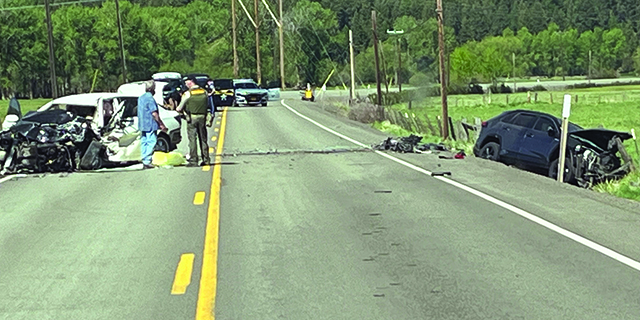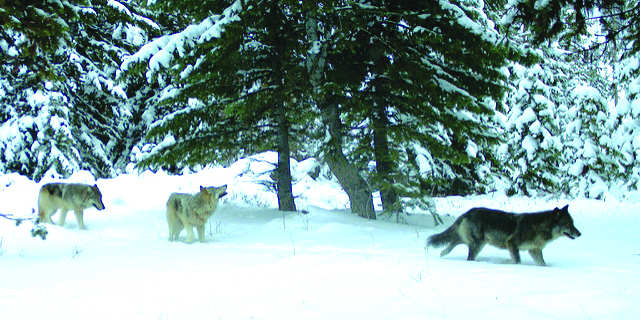‘Into the Wallowas’ explores Zumwalt Prairie
Published 5:00 pm Tuesday, August 23, 2011

- <p>Director of the Enterprise office of The Nature Conservancy Jeff Fields (with arms crossed) and Wallowa Land Trust director of outreach and education Julia Lakes (standing to Fields' right) lead a discussion about the uniqueness of the Zumwalt Prairie grasslands as part of the Wallowa Land Trust summertime excursion series Into the Wallowas.</p>
Visitors from West Virginia, California, Montana, Chicago and Eugene joined several local residents from Enterprise, Joseph and the suburbs of Imnaha to hike various portions of the Nature Conservancys 33,000-acre Zumwalt Prairie Preserve as part of the Wallowa Land Trust Into the Wallowas summertime excursion last Saturday.
About 25 people took advantage of perfect August weather with nary a cloud in the sky and a light breeze to hike and learn more about the Zumwalt Prairie, touted by the Nature Conservancy as the last intact grassland of its type in the United States.
The group was broken into three areas of interest, with one group hiking to the top of Harsin Butte led by The Nature Conservancys stewardship assistant Elsbeth Otto. Otto has been researching the history of the location and provided information to the tourist on homesteading and schools in the area.
Harsin Butte, explained Otto, was named for Fred and Katie Harsin who, along with their family, homesteaded and ran cattle on the Zumwalt Prairie in the early 1900s and their children and grandchildren remained residents until after World War II. Today, a lone apple tree marks the spot of the Harsin residence. Otto also spoke of three schools on this part of the Zumwalt Prairie including the Zumwalt, Harsin, and Jewell or Buttes schools.
The view atop the 5,500-foot-elevation Harsin Butte to the east takes in the Imnaha lands and provides a view of the Seven Devils mountain range; to the west and south hikers observed prairie and ranchlands extending to the picturesque Wallowa Mountains and the world-famous Wallowa Lake glacial moraines; and, the northern view provided hikers a look at the west Findley Butte and the rolling prairielands of the Zumwalt.
Project steward for The Nature Conservancy Justin Jones spoke to the group about invasive plant species on the prairie including cheat grass and ventenata grass, also referred to as North Africa grass. Jones explained some of the reasons the invasive species get established over native species and spoke about some of the strategies for controlling the invading plant.
One of the strategies Jones spoke about for controlling the proliferation of non-native grasses in the Zumwalt is prescribed fire. The Nature Conservancy is planning several prescribed fires across 580 acres of the Zumwalt in the area of the old Wade place and around Pine Creek this fall. The burns are one tool, along with managed grazing, that the Conservancy uses to manage prairie vegetation. Fire provides a surge of nutrients to the soil, and provides a particular boost to flowering plants.
Before beginning the hikes, Jeff Fields, director of the Enterprise office of The Nature Conservancy, gave a short orientation to the Conservancys work on the Zumwalt Prairie, which is a regionally significant grassland due to its relatively large size and intact nature.
In addition to grazing and prescribed fire, the Conservancy has an active program of weed management, rare plant monitoring, aspen and shrub restoration, riparian and aquatic restoration, and associated research efforts. One major area of research involves the impacts of different intensities of cattle grazing on the soils, plants, birds and insects of the area.
There are four public hiking trails on the Zumwalt Prairie Preserve provided by The Nature Conservancy. For information on the preserve and about the public hiking trails, or to get involved, contact The Nature Conservancy, Jeff Fields, at 541-426-3458, or visit nature.org.





